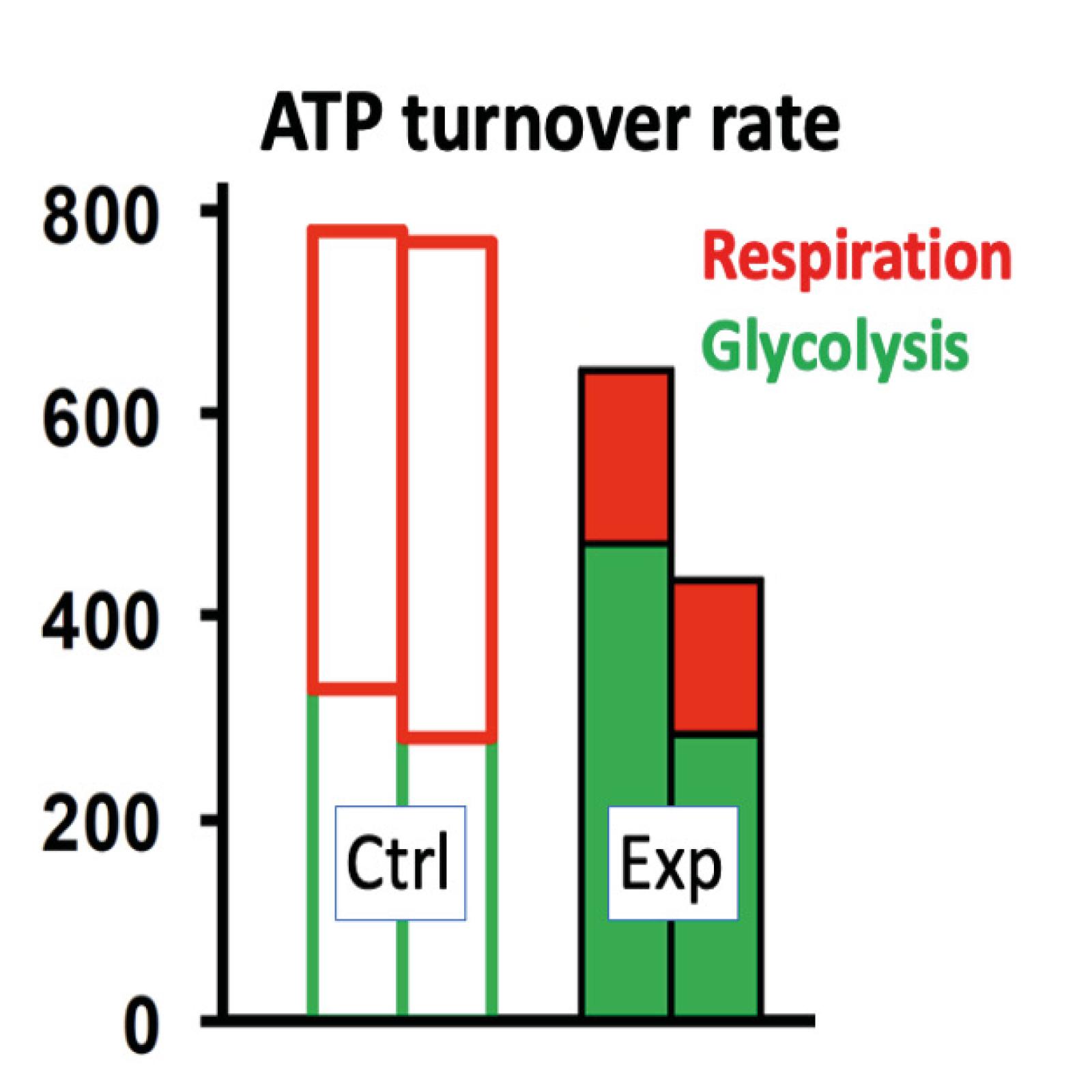Mitochondria, bioenergetics, metabolism and signaling
The main subject of the team concerns the relationship between energy metabolism and higher integration characters at the level of the cell or the whole organism.
Cellular respiration provides the energy required for the survival, activity and growth of mammals. Respiration produces carbon dioxide (CO2) and water. A simplification consists in dividing this process into two steps: 1) the oxidation of substrates (carbohydrates, lipids, proteins) into CO2 (metabolic steps), 2) the conversion of this oxidative energy (bioenergetics) into a form usable by the cell, the ATP molecule, with the consumption of oxygen and production of water. Most metabolic steps take place inside the mitochondria, and ATP production relies on the activity of enzymatic complexes inserted into the mitochondrial inner membrane (oxidative phosphorylation). A small fraction of extra-mitochondrial ATP comes from other metabolic steps, locally and / or transiently, and may even be the only energy source for the cell. This is the case with glycolysis that includes two steps generating ATP and is associated, in aerobic condition, with lactic fermentation.
Variations in energy metabolism accompany various pathologies (obesity, diabetes, cancer, neurodegenerative diseases) and are also correlated with aging. What remains to be determined is whether these changes are markers, aggravating factors, or directly causative of a pathology. Regarding cancer, the debate originates from Warburg's theory associating glycolysis (at the basis of tumor detection by PET scan) and cancerous phenotype.
Relationship between energy metabolism and cancer is now the main subject of the team. The team also develops projects in close relation with its expertise in mitochondrial bioenergetics and metabolism, often linked to collaborations with academics or industrial partners.






























